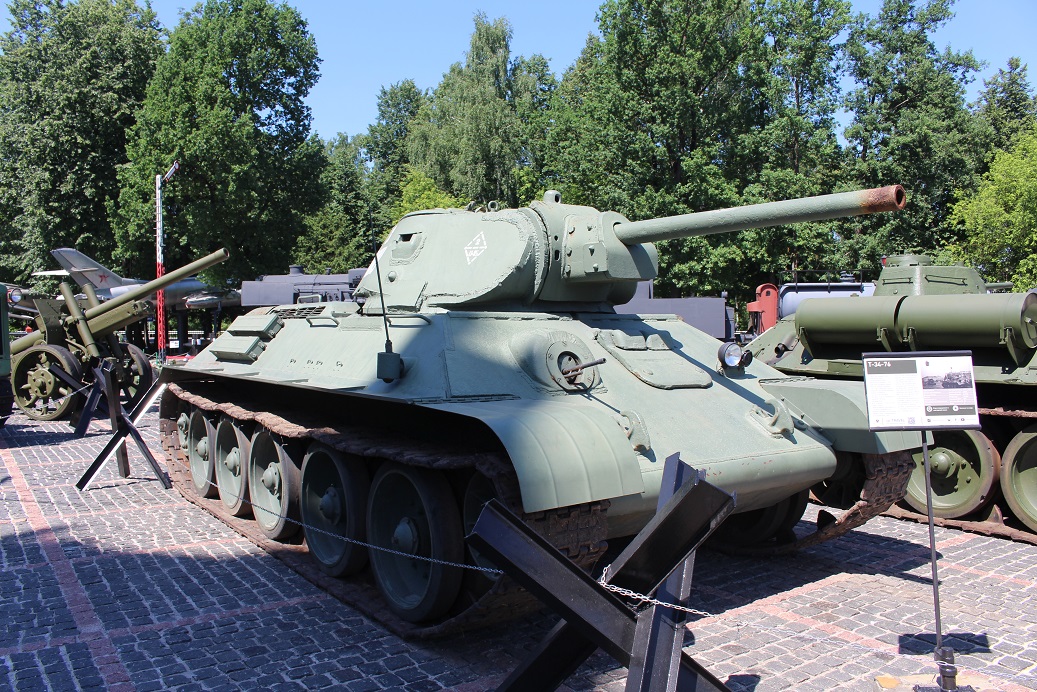T-34 Tank – The best Tank of World War 2?
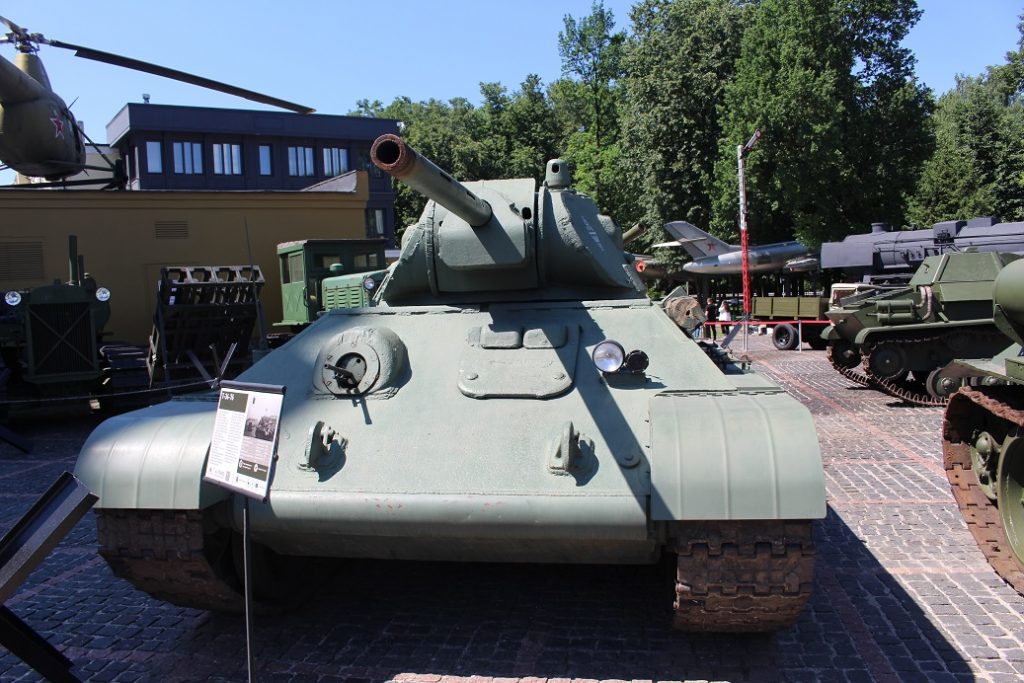
The T-34 tank is the most famous Soviet tank and one of the most recognizable symbols of World War II. A large number of these tanks of various modifications have survived to this day in the form of monuments and museum exhibits.
T-34 Development History
Developed by the design bureau of the tank department of the Kharkov plant number 183 under the leadership of Mikhail Ilyich Koshkin. The success of the project was predetermined by the use of the newest highly economical V-2 diesel engine, thanks to which the medium thick-armored T-34 inherited from the light, thinly armored BT an unusually high power density (the ratio of engine power to combat weight), which ensured the absolute superiority of the T tank throughout the Great Patriotic War- in cross-country ability, manoeuvrability and mobility… For the first time in the practice of world tank building, a long-barreled (30.5 caliber) 76-mm L-11 cannon (model 1939) was installed on the T-34 medium tank, significantly exceeding the initial velocity of an armor-piercing projectile (635 m/s).
The high modernization potential of the design turned out to be very important, this made it possible to effectively improve the combat qualities of the tank simultaneously with increasing its industrial production throughout the war. From 1942 to 1945, the main large-scale production of the T-34 was deployed at powerful machine-building plants in the Urals and Siberia, and continued in the post-war years. The leading plant for the modification of the T-34 was the Ural Tank Plant No. 183. The latest modification ( T-34-85) is in service with some countries to this day. The T-34 tank had a huge impact on the outcome of the war and on the further development of world tank building. German troops did not expect such powerful equipment from the USSR. Due to the totality of its combat qualities, the T-34 was recognized by many specialists and military experts as the best tank of the Second World War. When creating it, Soviet designers managed to find the optimal balance between the main combat, tactical, protective, operational, running and technological characteristics.
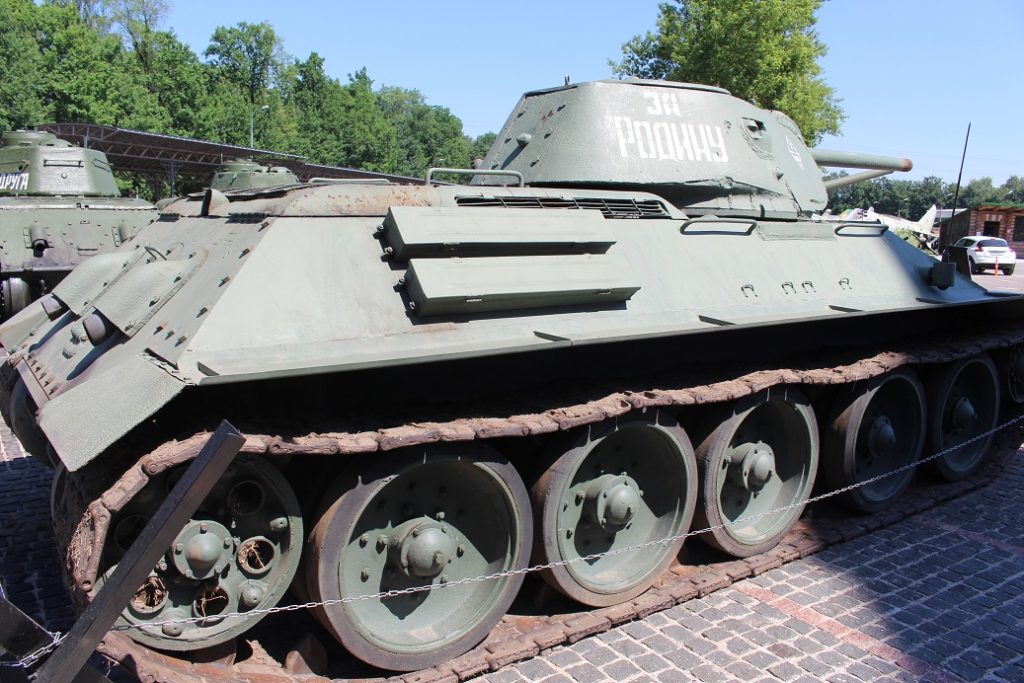
T-34/76 Medium Tank Side View
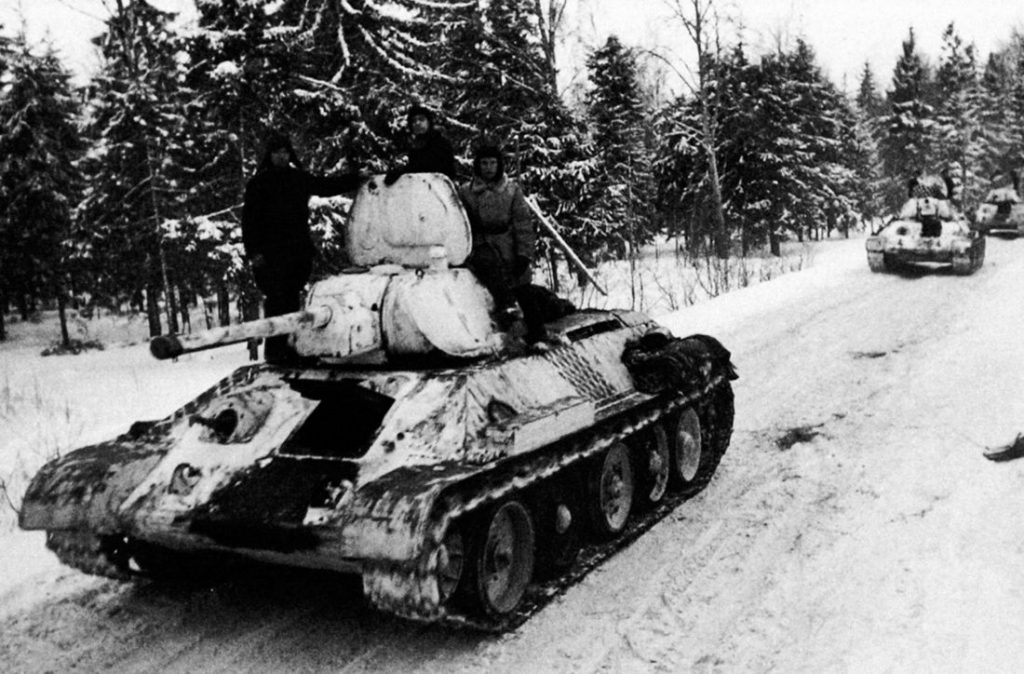
T-34/76 Medium in the Winter- Eastern Front
T-34 EARLY WW2 COMBAT USE
In 1941 on the border military districts, the mechanized corps numbered 954 T-34s. The proportion of new types of tanks (T-34, KV and T-40) in the troops was small, the basis of the Red Army’s tank fleet before the war was made up of lightly armored T-26 and BT. From the very first days of the war, T-34s took an active part in hostilities. In a number of cases, the T-34s achieved success, but in general, their use, like tanks of other types, during the border battle turned out to be unsuccessful – most of the tanks were quickly lost, while the German offensive could not be stopped. The fate of the machines of the 15th Mechanized Corps, which had 72 T-34 and 64 KV on June 22, 1941, is quite characteristic… For a month of fighting, almost all the tanks of the mechanized corps were lost. The commander of the 4th Tank Division Potaturchev told the Germans during interrogation: “Light German anti-tank guns were ineffective against heavy Russian tanks (50-68 tons), with other tanks, including the T-34, they fought successfully”. In fact, the 3.7 Pak penetrated the T-34 from all sides, except for the frontal part, at distances of up to 300 meters… The reasons for the low efficiency and high losses of the T-34 during this period are called the poor development of new tanks by personnel, tactically illiterate use of tanks, a shortage of armor-piercing shells, design flaws of poorly worked out in mass production vehicles, a lack of repair and evacuation means and the rapid movement of the front line, which forced to abandon maintainable tanks.
The head of the Armored Directorate of the North-Western Front, Colonel Poluboyarov, later Marshal of the Armored Forces on July 11, 1941, reported to Lieutenant General Fedorenko about the reasons for the large losses of tanks since the beginning of the war:
… Causes of losses in tank formations. a) The haste of bringing mechanized formations into battle without prior arrangement of interaction with other branches of the armed forces. b) Loss of control over the higher headquarters of rifle and mechanized corps, which led to ignorance of the situation at the front and to the formulation of formal tasks without prior coordination of the actions of infantry and tanks. c) Poor management within the tank formations themselves. d) The lack of support from the aviation led to significant losses, especially on marches. e) Poor technical condition of the undercarriage of the old fleet (“T-26” and “BT”). Continuous marches over distances of up to 1000 km completely disabled the chassis. Tanks were thrown into the territory occupied by the enemy, partly destroyed, and partly left there, not completely unusable. f) Well-organized anti-tank defense by the Germans and sufficiently strong reconnaissance enables them to quickly concentrate anti-tank guns where we are trying to use tanks.
After the abolition of the defeated mechanized corps, by the end of the summer of 1941, the brigade became the largest tank organizational unit. Until the fall of 1941, the T-34s sent to the front from factories made up a relatively small percentage of Soviet tanks and did not cause the Germans particularly serious problems. The sudden appearance of new vehicles at the front had a great effect on German tankers, because German tanks were almost powerless against the T-34 and KV:
… until at the beginning of October 1941, Eastern Orel, Russian T-34 tanks appeared in front of the German 4th Panzer Division and showed our tankers, who were accustomed to victories, their superiority in armament, armor and maneuverability. The T-34 tank caused a sensation. This 26-ton Russian tank was armed with a 76.2-mm cannon (caliber 41.5), the shells of which pierced the armor of German tanks from 1.5-2 thousand meters, while German tanks could hit the Russians from a distance of no more than 500 meters. and even then only if the shells hit the side and rear of the T-34 tank.
In early October 1941 G. Guderian in a letter to the leadership of the tank forces stated:
“… the Soviet T-34 tank is a typical example of backward Bolshevik technology. This tank cannot be compared with the best examples of our tanks, made by the faithful sons of the Reich and have repeatedly proved their superiority …”
Then by the end of the same month, under the influence of the actions of the Katukov brigade, his opinion about the capabilities of the T-34 changed significantly:
“I made a report on this situation, which is new to us, and sent it to the army group. I described in understandable terms the clear advantage of the T-34 over our Pz.IV and gave the appropriate conclusions that were supposed to affect our future tank building…”
After the battle for Moscow, the T-34 became the main tank of the Red Army, since 1942 more of them have been produced than all other tanks combined. In 1942, T-34s took the most active part in battles along the entire front line, with the exception of the Leningrad Front and the Kola Peninsula. The role of these tanks in the Battle of Stalingrad was especially significant, which is associated with the proximity to the combat area of the Stalingrad Tractor Plant, from the shops of which the tanks went directly to the front.
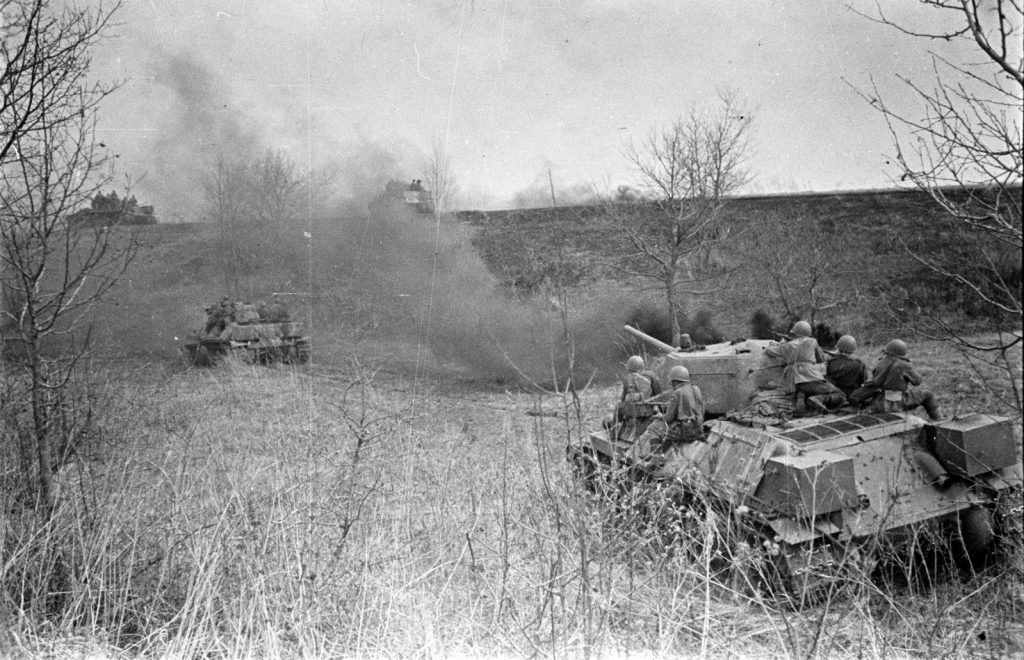
The largest battle of 1943 was the Battle of Kursk, during which the Soviet tank units, which were based on the T-34, together with other types of troops, managed to stop the German offensive, while suffering heavy losses. Modernized German tanks and assault guns, which had frontal armor reinforced to 70-80 mm, became less vulnerable to the T-34 cannon. The appearance of heavily armed and well-armored Tiger heavy tanks and Panther medium tanks complemented this rather bleak picture. The question of enhancing the armament and armoring of the tank was urgently raised, which led to the creation of a modification of the T-34-85.
In 1944 The T-34 with the 76-mm cannon continued to be the main Soviet tank, but from the middle of the year the tank was gradually replaced by the T-34-85. As part of the Soviet tank units, the T-34 took part in major offensive operations, which ended in the defeat of a large number of German units and the liberation of significant territories. Despite lagging behind German tanks in armament and armor, the T-34s acted quite successfully – the Soviet military leadership, having created a significant numerical superiority and seizing the strategic initiative, could choose the direction of strikes and, having hacked the enemy’s defenses, introduce tank units into a breakthrough, conducting large-scale operations. German tank units, at best, managed to fend off the impending crisis, at worst, they were forced to quickly retreat from the outlined “cauldrons”abandoning equipment. The Soviet military leadership sought to avoid tank battles as much as possible, leaving anti-tank artillery and aviation to fight German tanks.
The technical reliability of the T-34, significantly increased by the beginning of 1945, allowed the command to conduct a series of quick and deep operations with their participation. At the beginning of 1945, the headquarters of the 1st Guards Tank Army noted that the T-34s exceeded the warranty service life by 1.5-2 times and had a practical resource of up to 350-400 engine hours.
By the beginning of 1945, the T-34 with a 76-mm cannon was already relatively small in the troops, the niche of the main Soviet tank was firmly occupied by the T-34-85. Nevertheless, the remaining vehicles, in particular, in the form of sapper tanks, minesweepers, took an active part in the battles of the final year of the war, including in the Berlin operation. A number of these tanks took part in the defeat of the Japanese Kwantung Army.


